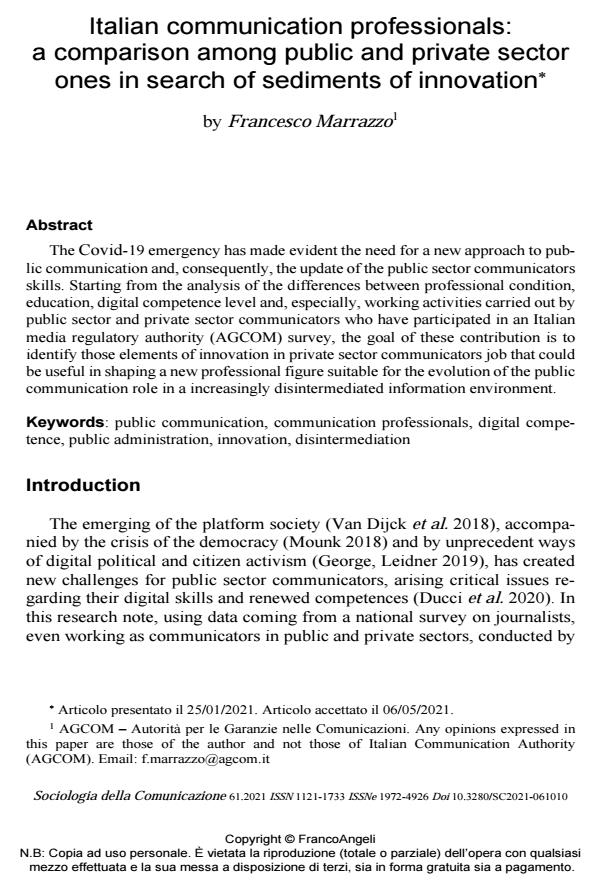Italian communication professionals: a comparison among public and private sector ones in search of sediments of innovation
Journal title SOCIOLOGIA DELLA COMUNICAZIONE
Author/s Francesco Marrazzo
Publishing Year 2021 Issue 2021/61
Language English Pages 10 P. 149-158 File size 278 KB
DOI 10.3280/SC2021-061010
DOI is like a bar code for intellectual property: to have more infomation
click here
Below, you can see the article first page
If you want to buy this article in PDF format, you can do it, following the instructions to buy download credits

FrancoAngeli is member of Publishers International Linking Association, Inc (PILA), a not-for-profit association which run the CrossRef service enabling links to and from online scholarly content.
The Covid-19 emergency has made evident the need for a new approach to public communication and, consequently, the update of the public sector commu-nicators skills. Starting from the analysis of the differences between professional condition, education, digital competence level and, especially, working activities carried out by public sector and private sector communicators who have partici-pated in an Italian media regulatory authority (AGCOM) survey, the goal of these contribution is to identify those elements of innovation in private sector communi-cators job that could be useful in shaping a new professional figure suitable for the evolution of the public communication role in a increasingly disintermediated in-formation environment.
Keywords: public communication, communication professionals, digital compe-tence, public administration, innovation, disintermediation
Francesco Marrazzo, Italian communication professionals: a comparison among public and private sector ones in search of sediments of innovation in "SOCIOLOGIA DELLA COMUNICAZIONE " 61/2021, pp 149-158, DOI: 10.3280/SC2021-061010